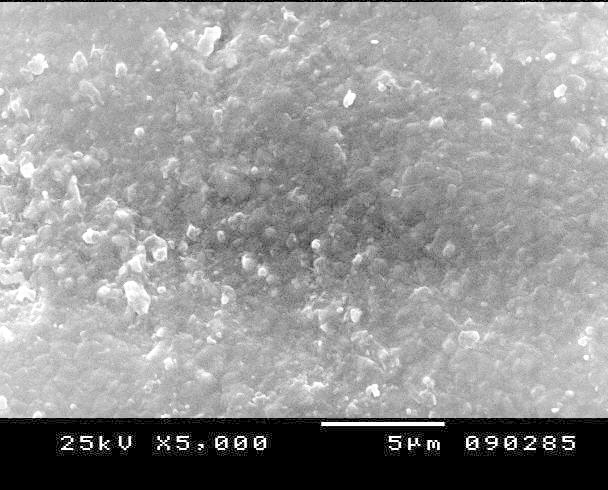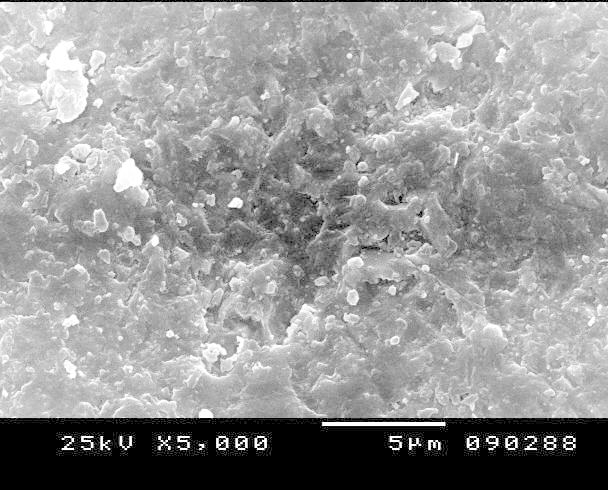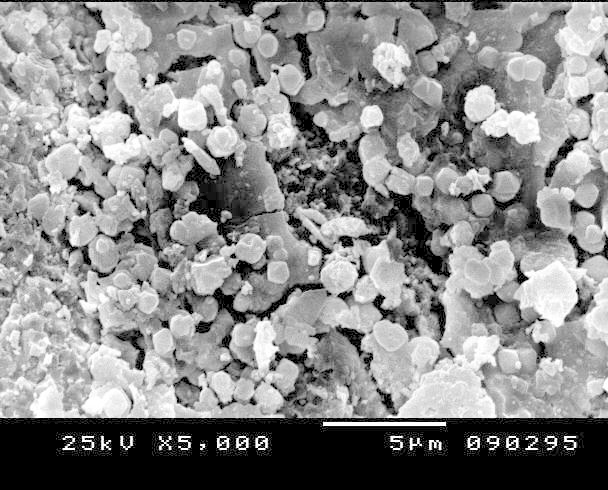IADR Abstract Archives
IMPACT OF ZIRCOS-E ETCHING SOLUTION ON THE SHEAR BOND STRENGTH OF ULTRA-TRANCELUCENT ZIRCONIA
Objectives: The introduction of ultra-translucent zirconia materials with increased indications for minimally invasive aesthetic restorations necessitates the investigation of their bonding potentiality.
Methods: Thirty six ultra-translucent zirconia discs, (KATANA UTML, Kuraray Noritake) (N=36, Ø 5mm × 3mm height) were divided into three groups (n=12): 1- Control (C): as-sintered discs, 2- Sandblasted discs (SB): discs were sandblasted by 110μm Al2O3 particles for 10 seconds, at 2.5 bar, and 10mm distance, 3- Etched discs (ZE): discs were dipped into Zircos-E etching solution (BIO DEN CO, Korea) for two hours. Two randomly selected discs from each group were examined by scanning electron microscopy (SEM) for surface roughness. The remaining ten discs of each group were bonded to enamel surfaces of thirty human central incisors using Panavia V5 resin cement (Kurary Noritake), and subjected to thermocycling for 10,000 cycles between 5°C and 55°C before performing the shear bond strength (SBS) test. The de-bonded interfaces were examined using SEM.
Results: The SEM examination of (ZE) specimens revealed a gross discontinuity of grain structure, accompanied with different degrees of porosities in contrast to the smoother surfaces obtained by (C) and (SB) specimens. The SBS of ZE (22.99±2.52 MPa) > SB (19.01±2.00 MPa) > C (8.69±1.95 MPa), One-way ANOVA test revealed a statistically significant difference between the three groups (p <0.001*). The de-bonded interfaces of (ZE) specimens showed highest probability (70%) for fractured enamel parts bonded to zirconia, while (SB) specimens showed the highest probability (40%) for zirconia/ adhesive failure with lower intensities for the other failure modes, the (C) specimens showed (90%) probability for zirconia/ adhesive failure. No enamel/ resin failure was observed for all specimens.
Conclusions: Etching of zirconia using Zircos-E etching solution is a promising technique for increasing surface roughness of zirconia leading to improved zirconia resin bonding in comparison to no treatment or the standard techniques of sandblasting.
Methods: Thirty six ultra-translucent zirconia discs, (KATANA UTML, Kuraray Noritake) (N=36, Ø 5mm × 3mm height) were divided into three groups (n=12): 1- Control (C): as-sintered discs, 2- Sandblasted discs (SB): discs were sandblasted by 110μm Al2O3 particles for 10 seconds, at 2.5 bar, and 10mm distance, 3- Etched discs (ZE): discs were dipped into Zircos-E etching solution (BIO DEN CO, Korea) for two hours. Two randomly selected discs from each group were examined by scanning electron microscopy (SEM) for surface roughness. The remaining ten discs of each group were bonded to enamel surfaces of thirty human central incisors using Panavia V5 resin cement (Kurary Noritake), and subjected to thermocycling for 10,000 cycles between 5°C and 55°C before performing the shear bond strength (SBS) test. The de-bonded interfaces were examined using SEM.
Results: The SEM examination of (ZE) specimens revealed a gross discontinuity of grain structure, accompanied with different degrees of porosities in contrast to the smoother surfaces obtained by (C) and (SB) specimens. The SBS of ZE (22.99±2.52 MPa) > SB (19.01±2.00 MPa) > C (8.69±1.95 MPa), One-way ANOVA test revealed a statistically significant difference between the three groups (p <0.001*). The de-bonded interfaces of (ZE) specimens showed highest probability (70%) for fractured enamel parts bonded to zirconia, while (SB) specimens showed the highest probability (40%) for zirconia/ adhesive failure with lower intensities for the other failure modes, the (C) specimens showed (90%) probability for zirconia/ adhesive failure. No enamel/ resin failure was observed for all specimens.
Conclusions: Etching of zirconia using Zircos-E etching solution is a promising technique for increasing surface roughness of zirconia leading to improved zirconia resin bonding in comparison to no treatment or the standard techniques of sandblasting.



